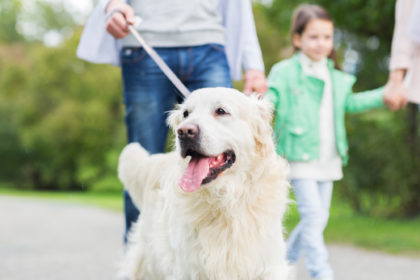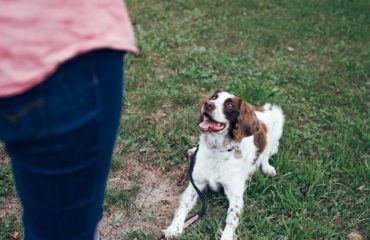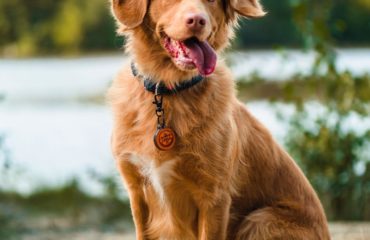Promoting Mental and Physical Well-Being: Daily Care Routines for Dogs in Single Kennels

Research shows that humans thrive on structure and routine. While it’s important to leave room for a little spontaneity, most of us do best when our days have a pre-determined order to them. Did you know that the same holds true for your pup?
Part of bonding with your furry friend is establishing a daily routine that you can both enjoy and look forward to. Ideally, this should include plenty of time for eating, sleeping, exercising, and the best part—spending quality time with one another.
Today, we’re sharing how to establish a schedule for dogs that will benefit their physical, mental, and emotional health. These activities can add variety and stimulation to the day, optimizing their overall well-being, especially for pups that spend the majority of the day in dog kennels.
The Value of Consistency
While it’s important to create a daily routine for your pup, it’s even more critical to create one that you know you can stick to. It’s easy to get overly ambitious when designing their day, only to realize that the steps you’ve scheduled won’t exactly work with your lifestyle.
To make sure your pup stays comfortable and doesn’t get overly anxious or stressed, try to keep your setup as consistent as possible. Make sure they have time each day for the four following activities:
- Feeding
- Walking
- Exercise
- Playing
As you’re crafting your plan, remember that each dog and pet parent are unique. While these are the necessities for a dog’s well-being, it’s important to be realistic and adaptable when necessary. For instance, if you work an overnight shift, you may need to adjust your morning schedule to the afternoon. As long as you’re predictable and steady with that routine, your dog should be able to adapt.
Remember to keep things realistic and make sure that you can maintain the setup that you’ve designed. If you can, it will be much easier to stick with the schedule once it’s in place.
Feeding and Watering
Most dogs benefit from eating two times each day with about eight to twelve hours in between each feeding. For most people, this will mean feeding their pup once in the morning and once in the evening. However, some smaller breeds and more active dogs may do better with smaller meals given more frequently, which can keep their blood sugar levels more consistent.
During each mealtime, remember to allocate plenty of time for your pup to use the potty after they eat. You may also need to walk them around a little before they’re ready to go. This way, you can avoid any accidents after they’ve finished digesting their kibble.
While this may hinge on your work schedule, try to avoid feeding your dog right before bedtime. They need time to move around a little and settle their stomachs before they’re ready to settle down for the night.
In terms of water, most experts recommend that your dog consume one ounce of water per pound of body weight each day. When developing your dog’s feeding schedule, add a reminder to check their water bowl. They should have access to fresh, clean water throughout the day.
For dogs in single kennels, this will require frequent checks to make sure their water levels are where they should be. If the outdoor temperature rises above 80 degrees Fahrenheit, they need water more often, and in greater amounts.
Snacks
Your dog’s main meals will be in the morning and evening. However, that doesn’t mean that you can’t give them anything else throughout the day. Running around dog kennels all day can make pups tired, and snacks can help replenish their nutrients and restore their energy.
While you can find plenty of healthy treats on the market, you can also hold back a little of their kibble and use that as a snack. This helps space out their caloric intake so they aren’t getting too much all at once. You can also use their food as a reward when they complete a stimulating activity, such as a food puzzle.
Incorporating snacks into your dog feeding schedule not only incentivizes good behavior, but it can also help them stay full throughout the day!
Daily Physical Exercise
Dogs kept in single kennels will get a good amount of exercise while exploring their grounds every day. However, it’s still important to set aside dedicated time for play.
There’s no exact time when this needs to happen, but the important thing is to make time for it every day. This might mean taking your pup for a quick walk right when you get home from work or during your lunch break. You may be able to squeeze in a game of catch in the evening or take a neighborhood stroll in the morning.
Each dog will have its own unique needs in terms of the amount and duration of exercise that it requires. Keeping your own schedule in mind, try to give your canine multiple bouts of activity instead of one single session. Three 10-to-15-minute periods are usually more effective than one 30-minute period.
As you plan your dog’s exercise routine, remember to keep their temperament in mind. If they tend to react negatively when they see another pup, it might be easier to walk them in the early morning or later in the evening. Try to avoid strenuous exercise right before or after mealtime to avoid dangerous conditions such as gastric dilatation-volvulus (GDV) or bloat.
Types of Exercise
While walking is one common dog exercise, it’s far from the only one. If you don’t live in a walkable neighborhood, don’t worry. There are lots of other ways you can give your pup a great workout that stimulates their body and mind.
For instance, you can teach your dog a trick or practice simple obedience skills. Both of these activities allow you to bond and provide excellent stimulation. Remember to take your pet’s unique senses and capabilities into consideration, especially for senior dogs.
Look for ways to get creative with exercise, and remember to add a little play in there, too! Exercise should go hand-in-hand with a healthy dog feeding schedule so you can make sure your pup is staying physically fit.
Mental Stimulation
Walking, playing, and spending time outdoors are great ways to help your dog exercise. These activities keep their mind and body engaged while allowing you both to spend quality one-on-one time together. If possible, you can also incorporate dedicated time into your pet’s routine for mental stimulation.
This can be as simple as letting your dog sniff and explore while you go for a walk. You can also give them a puzzle toy that requires them to unlock a compartment before they are rewarded with a healthy treat. You could even set up a puppy obstacle course to strengthen their agility and mobility.
Not sure where to start? Here’s a list of the best brain games for dogs, straight from an expert.
As far as how much time to allot to this activity, each dog is different. Active, adult working dogs—such as German Shepherds—will naturally require more mental stimulation per day than a newborn puppy. While the best amount for your dog will depend on their age, breed, and temperament, puppies usually only need 15 to 30 minutes while adult dogs can tolerate more.
Sleep Routine
A healthy schedule for dogs should include plenty of time for your precious pup to rest. It’s easy to overlook sleep when you’re scheduling out your pet’s day, but this downtime shouldn’t be overlooked.
Plenty of sleep is critical to dog well-being, but again, that can look different for each one. The age, size, breed, and overall health of your pup will determine how much shut-eye they need each night. Most dogs will sleep between 12 to 14 hours each night, though this number can be much higher for puppies.
If your puppy sleeps most of the day, you might find that they’re more active at night. Once they’re a little bigger and you can establish a daily schedule for them, you should be able to keep them on a normal rest/wake cycle. Give your dog their own bed and place to sleep, making sure their environment is as comfortable and cozy as possible.
Grooming Practices
Of course, your dog’s schedule should also include practices designed to keep them looking their best. Good hygiene habits are essential to their health, and will not add too much time to their routine.
Your dog’s breed will play a role in how often you need to groom them. Certain breeds—such as poodles—will require more frequent sessions than other, more low-maintenance breeds. General hygienic practices you can perform regularly include:
- Nail trimming
- Teeth brushing
- Ear cleaning
- Coat brushing
All dogs need these routines, regardless of their breed. While you can perform many of these tasks yourself at home, you can also take your pup to a professional groomer. You can rest assured that they will have the proper tools, knowledge, and experience and that your dog will look wonderful after their appointment.
At-home grooming practices can include brushing, bathing, and dental care. Make sure you’re using the correct gear (e.g. doggy toothbrushes) to keep your pup safe. While regular bathing is a critical part of canine hygiene, take care not to bathe your dog too much, which could strip their fur of its nourishing, natural oils.
Socialization Opportunities
Pups in single kennels may be at home for periods throughout the day. Whether you work in an office all day or you can be at home for part of the time, there will be periods when they’ll be alone. This is why it’s important to build socialization time into the schedule for your dogs.
There are many different ways to do this, depending on what your schedule (and your dog’s temperament) will allow. Some ways you can expose your pet to social situations and build their tolerance for other animals and people include:
- Dog parks
- Doggy play dates
- Puppy classes
- Walks in a public space
Take it slow and try to not give your pet too much stimulation, or too fast. Keep small treats on hand to offer as a reward when they successfully handle a social situation. Remember that they can read your temperament, and if you’re nervous about a new encounter, they’re more likely to react the same way.
The earlier you can gently expose your dog to a variety of people, places, and situations, the easier it will be for them to socialize down the road. It will also play a role in how their temperament develops. While socialization is easiest to grasp in the puppy stage, older dogs can still learn to navigate new situations with confidence.
Slowly introduce your dog to new sights, smells, and sounds. Be sure to supervise them closely and emphasize positivity through praise and treats.
Establish a Healthy Schedule for Dogs
You love your pup and want them to feel healthy from the inside out. The key is to give them a foundation based on nourishing daily habits. From physical exercise and stimulation to consistent feeding and positive socialization, many factors play a role in dog well-being.
By prioritizing a consistent schedule for dogs, you can give your pet a lifetime of health and happiness. At Benchmark Kennels, we’re here to help. We offer a variety of kennel options, from six-bay to single kennels, designed to keep your pet happy and safe. To learn more, contact us!





You must be logged in to post a comment.